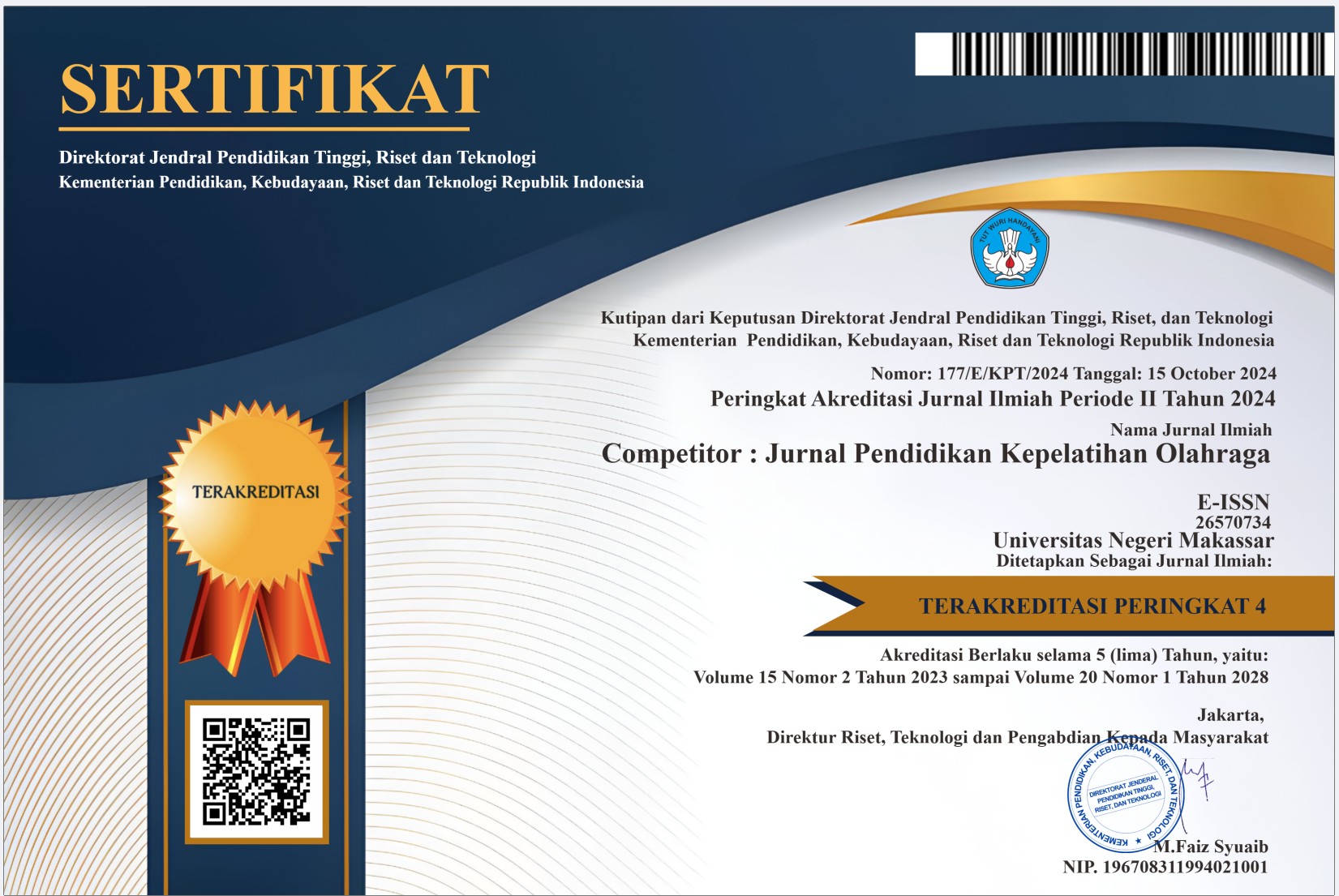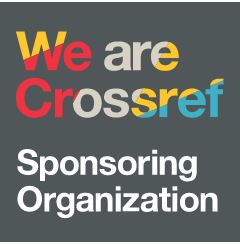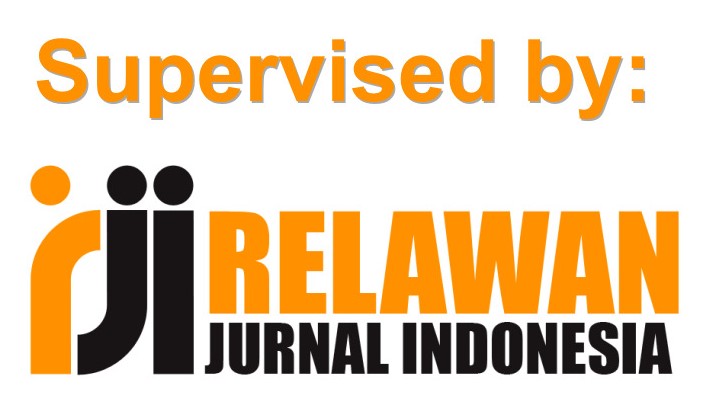Survey Of Sickle Kicks In Pencaksilat Sport In Senior High School Students 12 Makassar
DOI:
https://doi.org/10.26858/cjpko.v17i1.71302Keywords:
Sickle kick, Pencaksilat.Abstract
This research is a descriptive study that aims to determine the description of the level of sickle kick ability in pencaksilat sports in SMA Negeri 12 Makassar students. The population in this study were all extracurricular students totaling 45 students. The sample in this study was 20 male SMA Negeri 12 Makassar students selected by simple random sampling. Data collection techniques were obtained through tests and measurements of sickle kick data. The data analysis technique used is percentage and analysis. The research data obtained the percentage of data on the ability of sickle kick ability in pencaksilat sports in SMA Negeri 12 Makassar students from 20 students or (100%), the Excellent category as many as 2 students or (10.0%), the Good category as many as 4 students or (20.0%), the Fair category as many as 11 students or (55.0%), the less category as many as 3 students or (15.0%), and the category is very less as many as 0 students or (0%). Thus, it can be concluded that the percentage of the final data results of the sickle kick ability in pencaksilat sports in SMA Negeri 12 Makassar students is in the Fair category.References
Kartini, K., Sugiyanto, S., & Siswandari, S. (2018). Development of Training Model of Pencak Silat Dropping Technique in Match Category Based on Biomechanical Analysis for Youth Athletes. Journal of Education, Health and Sport, 8(12), 135–148.
Salvatore, A. C. (2012). Educators Selection of Pedagogical Strategies to Prepare the Entry Level Athletic Trainer on Techniques Related to Sudden Death in Sport. University of Connecticut.
Slimani, M., Chaabene, H., Miarka, B., Franchini, E., Chamari, K., & Cheour, F. (2017). Kickboxing review: anthropometric, psychophysiological and activity profiles and injury epidemiology. Biology of Sport, 34(2), 185–196.
Halim, M., & Fadhila, S. (2019). Stabilitas tubuh dalam pencaksilat: Teori dan praktik untuk meningkatkan akurasi tendangan sabit. Malang: Universitas Negeri Malang Press.
Harsono, H. (2018). Efektivitas tendangan dalam olahraga bela diri. Jakarta: Penerbit Pendidikan.
Lubis, A. (2014). Kecepatan tendangan dalam pencaksilat: Analisis dan pengukuran. Medan: Universitas Sumatera Utara Press.
Purba, S., Ahadid, A., Putra, W., Rahman, A. A., Aryani, P., Jannah, F., Widodo, H., Magalhaes, A. D. J., & Hasanuddin, M. I. (2023). Metodologi Penelitian Pendidikan Kompetensi dan Aplikasinya.
Rahmadani, E., Mashuri, M. T., Sitopu, J. W., Hasanuddin, M. I., Suarsana, I. M., Asriadi, M., Putri, J. H., Maharani, I., Hasanuddin, M. I., Maswar, Elfina, H., & Irwanto. (2023). Statistika Pendidikan. https://batukota.bps.go.id/publication/download.html?nrbvfeve=OTc4MDZhYzZ hYzAyY2U4ZTBlNTNlYmJm&xzmn=aHR0cHM6Ly9iYXR1a290YS5icHMuZ28uaWQvcHVibGljYXRpb24vMjAxNS8xMC8zMC85NzgwNmFjNmFjMDJjZThlMGU1M2ViYmYvc3RhdGlzdGlrYS1kYWVyYWgta290YS1iYXR1LTIwMTUuaHRtbA%3D
Rahmawan, P., & Prasetyo, A. (2019). Pengaruh postur tubuh dalam teknik tendangan pencaksilat. Surabaya: Penerbit Gerak.
Ramadhan, S. (2022). Peningkatan kualitas tendangan sabit melalui latihan fisik dan teknik dalam pencaksilat. Bandung: Pustaka Olahraga.
Saputra, D., & Kurniawan, H. (2017). Fleksibilitas dalam olahraga pencaksilat: Pengaruh terhadap tendangan sabit. Yogyakarta: Penerbit Olahraga.
Setiawan, M., & Sugianto, B. (2020). Latihan eksplosif untuk meningkatkan kecepatan tendangan dalam olahraga pencaksilat. Surabaya: Penerbit Fisik.
Sugiyanto, D. (2021). Kekuatan otot dan teknik dalam pencaksilat. Semarang: Universitas Diponegoro Press.
Wahyudi, R., & Kurniawan, I. (2018). Pengaruh latihan keseimbangan tubuh terhadap teknik tendangan dalam pencaksilat. Jakarta: Penerbit Sains.
Wijaya, S. (2020). Kesalahan teknik dalam pencaksilat dan dampaknya pada performa atlet. Malang: Pustaka Atletik.
Downloads
Published
Issue
Section
License
Copyright (c) 2025 Muhammad Qasash Hasyim, M. Imran Hasanuddin, Silatul Rahmi (Author)

This work is licensed under a Creative Commons Attribution 4.0 International License.





















